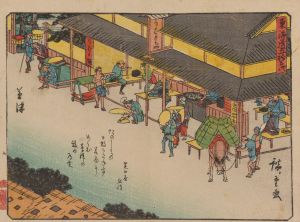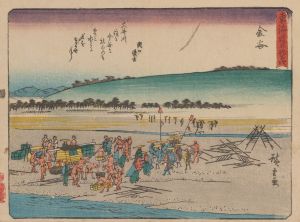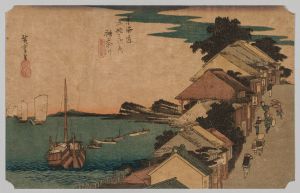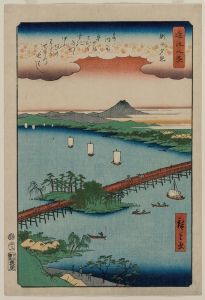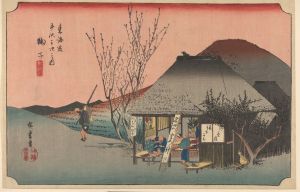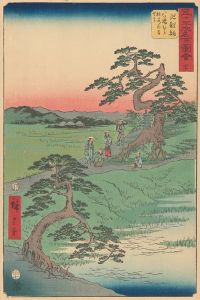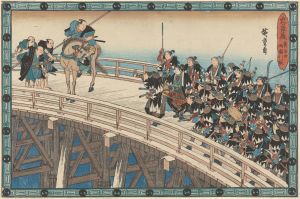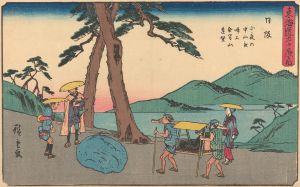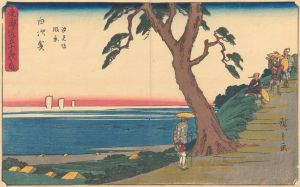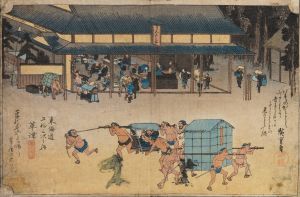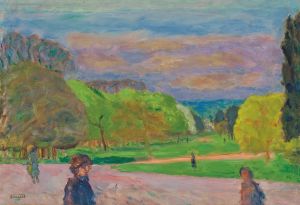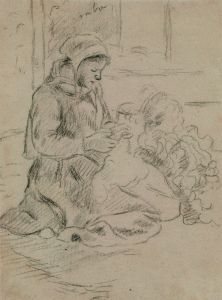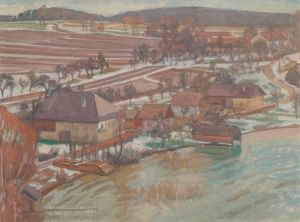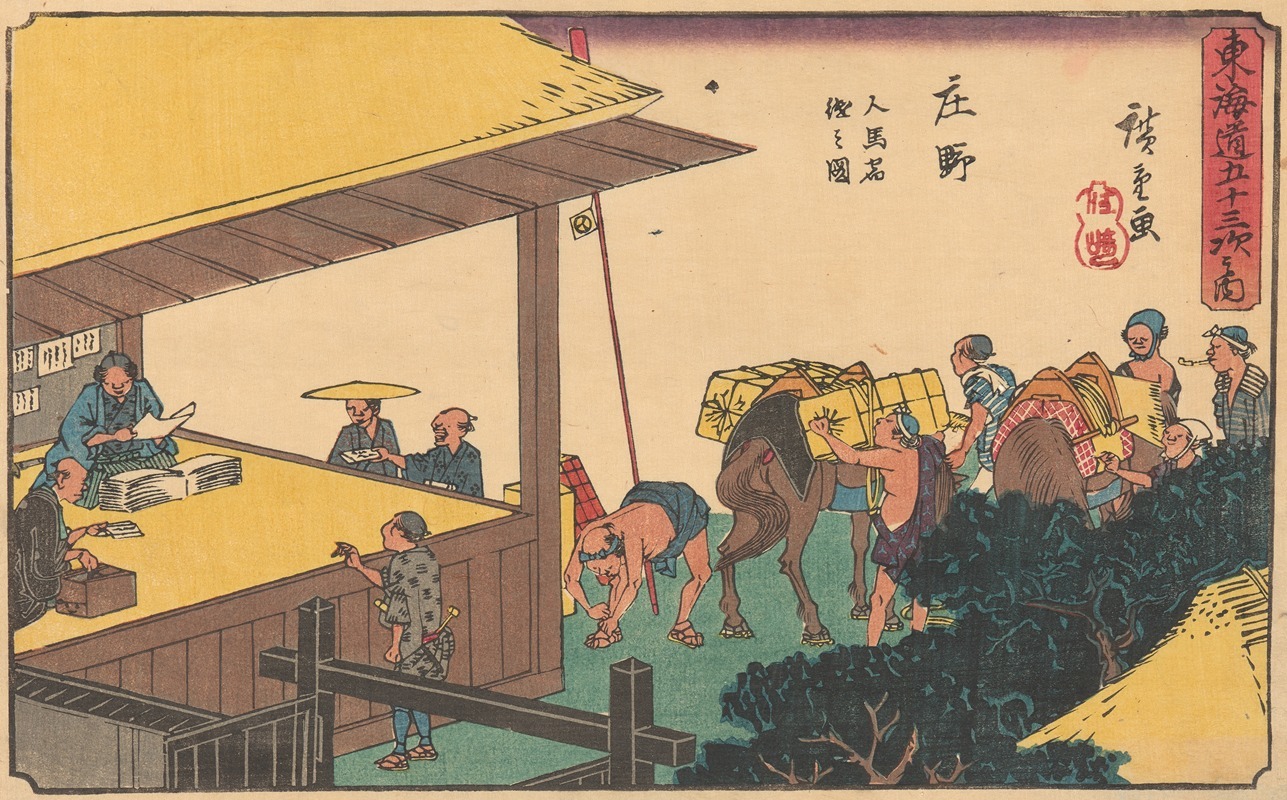
Shono
A hand-painted replica of Andō Hiroshige’s masterpiece Shono, meticulously crafted by professional artists to capture the true essence of the original. Each piece is created with museum-quality canvas and rare mineral pigments, carefully painted by experienced artists with delicate brushstrokes and rich, layered colors to perfectly recreate the texture of the original artwork. Unlike machine-printed reproductions, this hand-painted version brings the painting to life, infused with the artist’s emotions and skill in every stroke. Whether for personal collection or home decoration, it instantly elevates the artistic atmosphere of any space.
Andō Hiroshige, one of the most renowned ukiyo-e artists of the Edo period, created a series of woodblock prints titled "The Fifty-three Stations of the Tōkaidō" (Tōkaidō Gojūsan-tsugi), which depicted the scenic views along the Tōkaidō road, the main travel route between Edo (modern-day Tokyo) and Kyoto. Among these prints is "Shono," which is celebrated for its dynamic composition and atmospheric effects.
The "Shono" print is part of Hiroshige's first Tōkaidō series, known as the "Hoeido edition," published around 1833-1834. This series is considered one of Hiroshige's masterpieces and played a significant role in popularizing the Tōkaidō as a subject in Japanese art. The "Shono" print captures a sudden rainstorm over the Shono-juku, the 45th station on the Tōkaidō road. This station was located in present-day Kameyama, Mie Prefecture.
In the "Shono" print, Hiroshige masterfully conveys the intensity of the rain through diagonal lines that represent the downpour, a technique that adds a sense of movement and urgency to the scene. The composition features travelers hastily making their way along the road, some with straw hats and others with umbrellas, as they seek shelter from the rain. The figures are depicted in various poses, suggesting their struggle against the elements, which adds a human element to the landscape.
Hiroshige's use of color and line in the "Shono" print is particularly noteworthy. The artist employs a limited color palette, dominated by shades of blue and gray, to evoke the somber mood of the rainstorm. The contrast between the dark, looming clouds and the lighter tones of the travelers' clothing enhances the dramatic effect of the scene. The use of bokashi, a technique of color gradation, is evident in the sky and ground, contributing to the depth and atmosphere of the print.
The "Shono" print, like many in the Tōkaidō series, reflects Hiroshige's keen observation of nature and his ability to capture the transient beauty of the landscape. His work is characterized by a harmonious balance between human activity and the natural environment, a theme that resonates throughout the series. The depiction of rain in "Shono" is not only a representation of weather but also a metaphor for the challenges and unpredictability of travel during the Edo period.
Hiroshige's Tōkaidō series, including the "Shono" print, had a significant impact on both Japanese and Western art. The series was widely appreciated in Japan for its innovative approach to landscape and travel scenes. In the late 19th century, Hiroshige's work, along with that of other ukiyo-e artists, influenced European artists such as Vincent van Gogh and Claude Monet, contributing to the Japonisme movement.
In summary, "Shono" by Andō Hiroshige is a quintessential example of the artist's skill in capturing the essence of a moment in nature. Through his use of composition, color, and line, Hiroshige creates a vivid portrayal of a rainstorm on the Tōkaidō road, offering viewers a glimpse into the experience of travel during the Edo period. The print remains a testament to Hiroshige's enduring legacy as a master of ukiyo-e and his influence on the art world.





